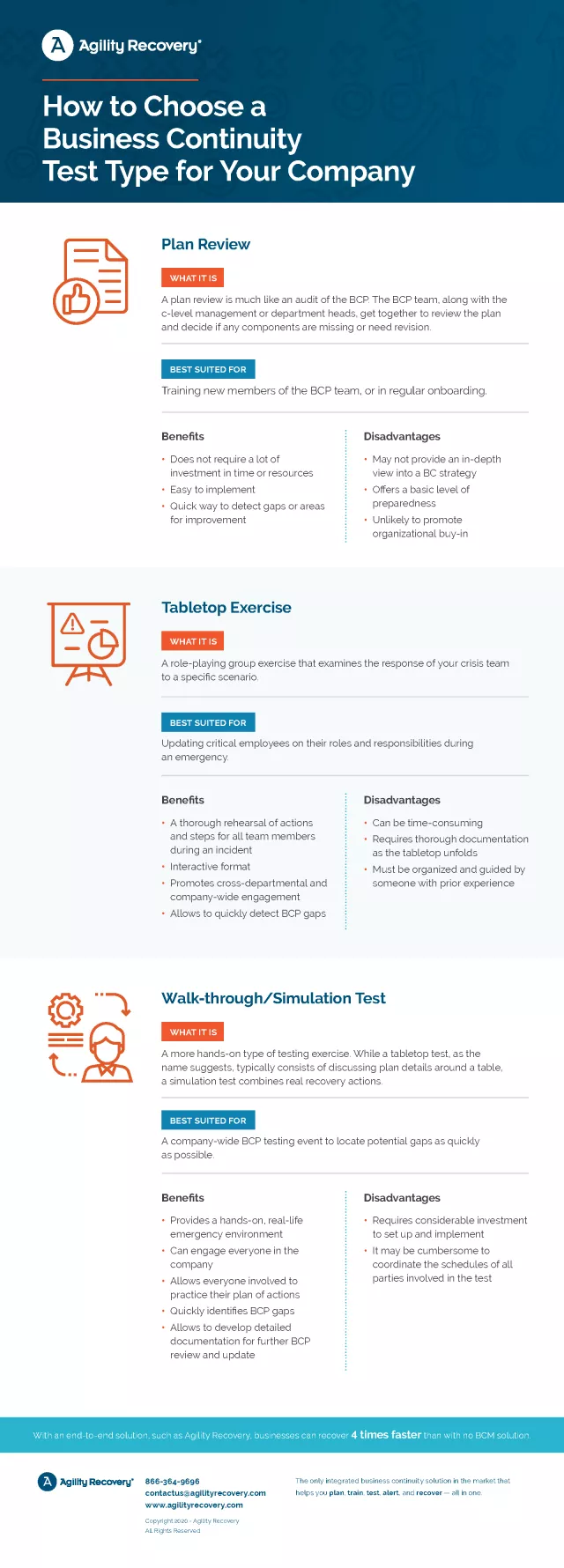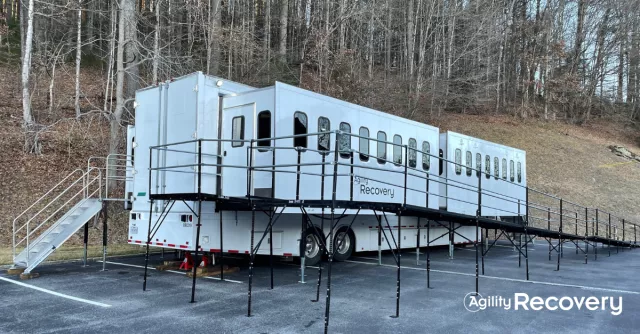[Infographic] How to Choose the Type of Business Continuity Test

Testing business continuity allows you and your workforce to exercise how to approach an emergency and find gaps in the plan to address where it needs improvement. Every company has very targeted and specific ways and types of tests used to ascertain information in different areas within the department. Our infographic presents some of the most popular and productive ways to test a business continuity plan.
Plan Review
What is a business continuity plan review?
A plan review is much like an audit of the Business Continuity Plan. The BCP team, along with the C-level management or department heads, get together to review the plan and decide if any components are missing or need revision.
What is it best suited for?
Training new members of the BCP team, or in regular onboarding.
Benefits of a plan review
- Does not require a lot of investment in time or resources
- Easy to implement
- A quick way to detect gaps or areas for improvement
Disadvantages of a plan review
- May not provide an in-depth view into a BC strategy
- Offers a basic level of preparedness
- Unlikely to promote organizational buy-in
Tabletop Exercise
What is a tabletop exercise?
A tabletop exercise is a role-playing group exercise that examines the response of your crisis team to a specific scenario.
What is it best suited for?
Updating critical employees on their roles and responsibilities during an emergency.
Benefits of a tabletop test exercise
- A thorough rehearsal of actions and steps for all team members during an incident
- Interactive format
- Promotes cross-departmental and company-wide engagement
- Allows to quickly detect BCP gaps
Disadvantages of a tabletop test exercise
- Can be time-consuming
- Requires thorough documentation as the tabletop unfolds
- Must be organized and guided by someone with prior experience
Walk-through/Simulation Test
What is a walk-through test?
A walk-through or simulation test is a more hands-on type of testing exercise. While a tabletop test, as the name suggests, typically consists of discussing plan details around a table, a simulation test combines real recovery actions.
What is it best suited for?
A company-wide BCP testing event to locate potential gaps as quickly as possible.
Benefits of a walk-through test
- Provides a hands-on, real-life emergency environment
- Can engage everyone in the company
- Allows everyone involved to practice their plan of actions
- Quickly identifies BCP gaps
- Allows to develop detailed documentation for further BCP review and update
Disadvantages of a walk-through test
- Requires considerable investment to set up and implement
- It may be cumbersome to coordinate the schedules of all parties involved in the test




